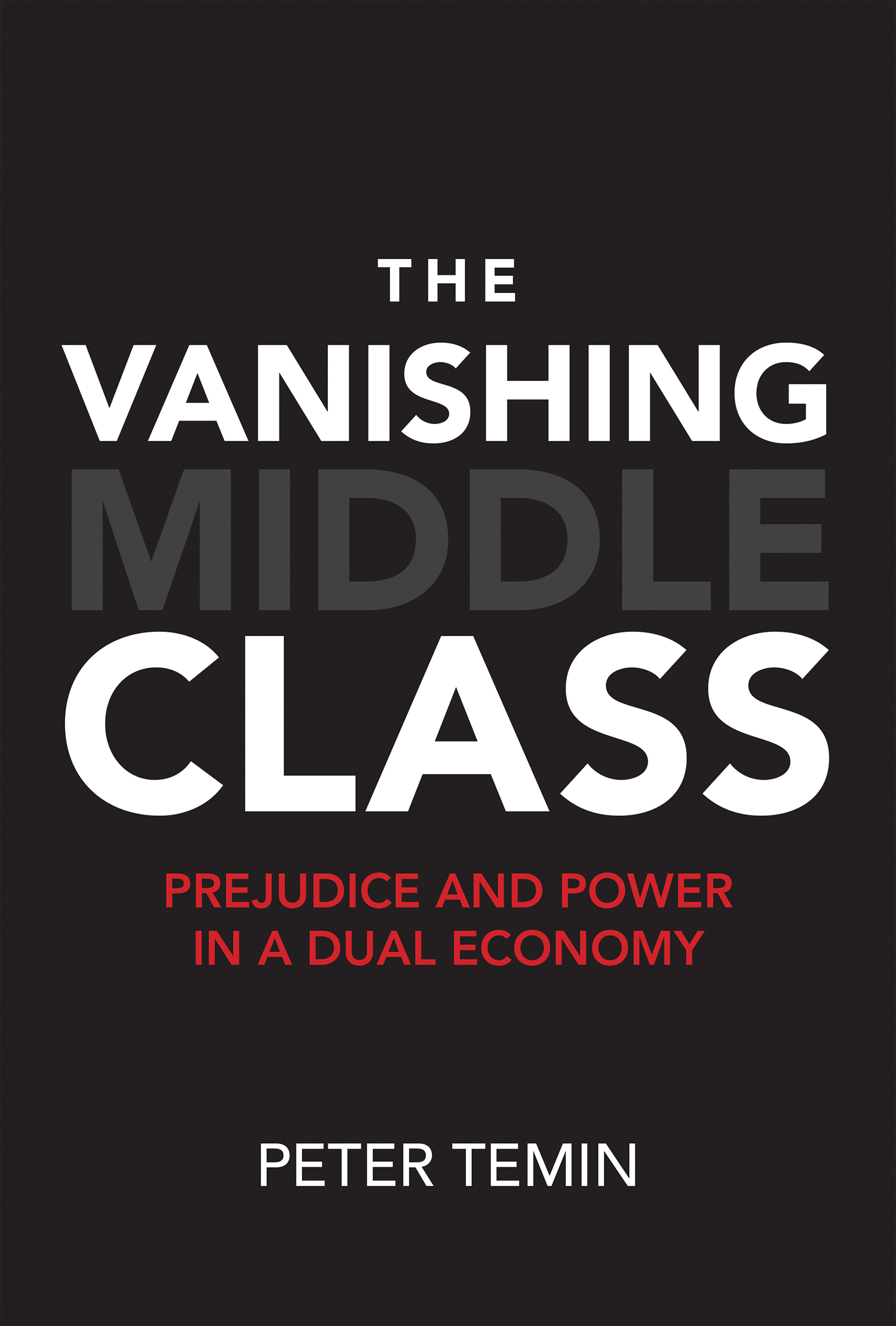
The United States is becoming a nation of rich and poor, with few families in the middle. In this book, MIT economist Peter Temin offers an illuminating way to look at the vanishing middle class. Temin argues that American history and politics, particularly slavery and its aftermath, play an important part in the widening gap between rich and poor. Temin employs a well-known, simple model of a dual economy to examine the dynamics of the rich/poor divide in America, and outlines ways to work toward greater equality so that America will no longer have one economy for the rich and one for the poor. Many poorer Americans live in conditions resembling those of a developing country—substandard education, dilapidated housing, and few stable employment opportunities. And although almost half of black Americans are poor, most poor people are not black. Conservative white politicians still appeal to the racism of poor white voters to get support for policies that harm low-income people as a whole, casting recipients of social programs as the Other—black, Latino, not like us. Moreover, politicians use mass incarceration as a tool to keep black and Latino Americans from participating fully in society. Money goes to a vast entrenched prison system rather than to education. In the dual justice system, the rich pay fines and the poor go to jail.
Author

Peter Temin (born 17 December 1937) is an economist and economic historian, currently Gray Professor Emeritus of Economics, MIT[3] and former head of the Economics Department. Temin graduated from Swarthmore College in 1959 before earning his Ph.D. at MIT in 1964. Beginning in the 1960s and early 1970s he published on American economic history in the 19th century, including The Jacksonian Economy (1969) and Causal Factors in American Economic Growth in the Nineteenth Century (1975), as well as Reckoning with Slavery (1976), which was an examination of the slave economy and its effects. His papers of the 1960s would reflect intense empirical study as part of his working method, including composition of iron and steel products, which would later be part of his analysis of industrial development. He continued his study of 19th century industrialization with Engines of Enterprise.